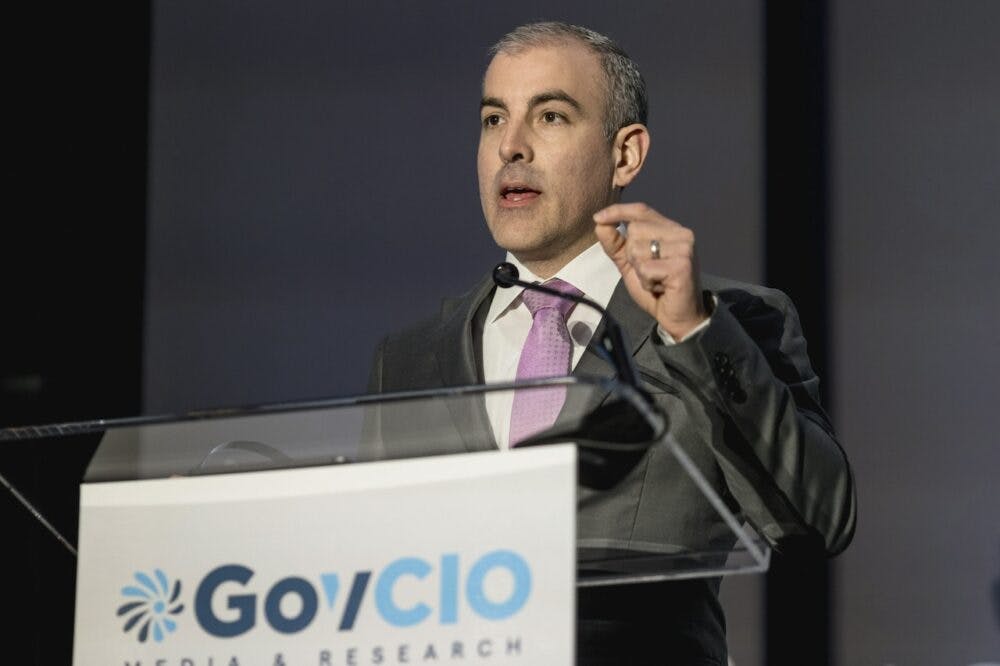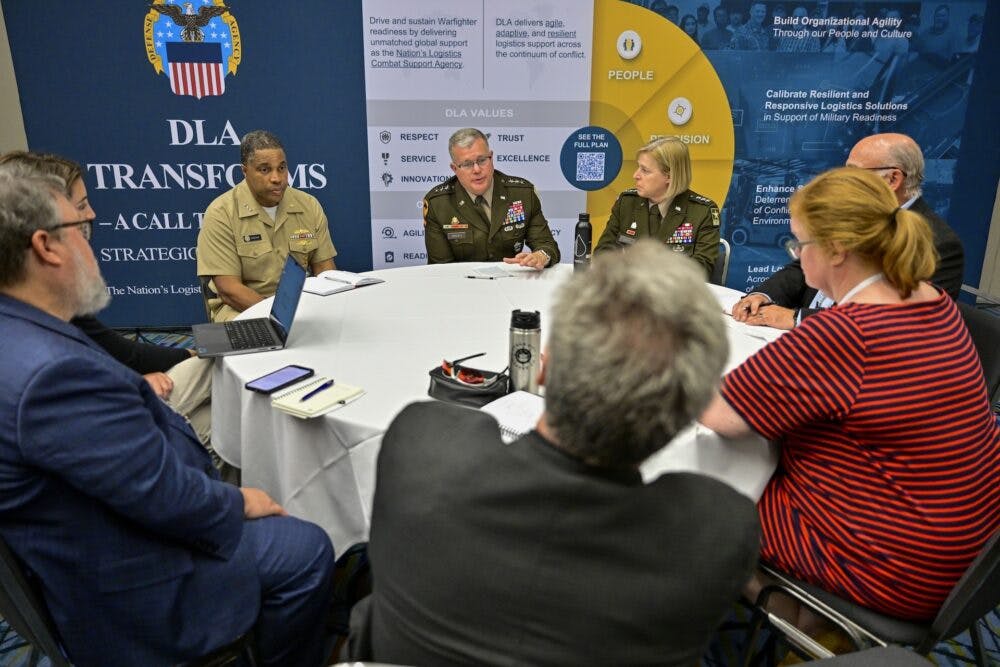New Acquisition Practices at NASA Reflect Modernized Procurement for Government
NASA’s procurement chief highlights the agency’s new Innovation Acquisition Launchpad, addresses tech challenges and outlines top priorities for 2023.

NASA is transforming how it is doing business, including meeting newly set goals for diversity in its contractor base and also developing and acquiring new technologies faster.
NASA Senior Procurement Executive and Deputy Chief Acquisition Officer Karla Smith Jackson described NASA’s procurement process as being too slow for today’s technological fast-paced environment. America’s space agency also wants to diversify its mixed industrial base. Its procurement focus is shifting from one of traditional contracting to more modular approaches that encourage taking risks safely.
One aspect is the agency’s new Innovation Acquisition Launchpad, which aims to accelerate the communication of innovation, focus on multiple types of procurement and offer a safe environment to manage risks. Jackson said NAIL will also encourage more innovative practices and improve customer experience. Jackson shares more about where she sees the state of procurement at the agency, how she wants contractors to engage and how the future of acquisition relies on modernized practices and technology.
NASA has launched its new Acquisition Innovation Launchpad, also known as NAIL. How will NAIL enhance the procurement process?
Jackson: NAIL is a framework of innovation with bodies of expertise. From the center level, which is our level of execution, to the senior executive level across the enterprise all the way through headquarters. We have representation not just within procurement, but also with our program managers, with our general counsel, with our Office of Financial Operations, our CFO. It’s also cross-functional stakeholders as well as industry partners to facilitate the use of innovative acquisition techniques and then identify and develop tools.
What distinguishes NAIL is that we’re actually looking at sole-source procurement as well as competitive procurement. We’re also looking at smart program management as well as procurement strategy and procurement management. What we’re looking to do is provide a safe place to manage risk taking and allow people to test out things so that if something fails, it’s not a big catastrophic failure, it’s on a smaller scale. Then once we test those, I’ll call them hypotheses on a smaller scale, we can then determine whether it could be used on an enterprise-wide basis. We believe that if we stimulate more agile or better and innovative acquisition practices that we can have better procurement outcomes.
We think that we can improve the customer experience — that means industry as a customer as well as our technical counterparts that use contracts to execute their mission. With our industry partners, we’re looking for transformational business practices that we might be able to adopt. We’re looking at our data analytics to see if we are accumulating the right data and are we looking at the right things. And then there could be advanced technologies, we might be able to leverage technology to more seamlessly deliver our procurement services.
What are some of the challenges you and your team face when it comes to getting tech in the door to accomplish NASA’s vast missions?
Jackson: There’s always this clash of what people call “new space,” meaning new companies that operate in the commercial space market or space industry within the past 20 years. And then what we call “traditional aerospace” — those who have been operating for the past 70 years. NASA is trying to diversify our supply chain or our industrial base by having a mix of traditional aerospace. We are also looking to both of those groups, be it traditional aerospace or the new space, to increase new entrants and help us with manage underrepresented groups through subcontracting and teaming agreements.
We’re incentivizing that particular piece of doing business by having a diversity, equity, inclusion and accessibility plan similar to subcontracting plans. So when you win a contract or you’re awarding a contract at NASA from now on, it’s a requirement to have a DEI&A plan, and that is reviewed annually to ensure that you’re meeting your obligations both with your organic workforce as well as your teaming industrial base and supplier base.
We do have a challenge that the Biden administration has given us to increase the amount of spend with small businesses, in particular small, disadvantaged businesses. Last year, our goal was 8.2%. We achieved 7.9%. While that represented almost three-quarters of a billion dollars of increased spend, it still didn’t meet the goal. We’re steadily increasing our obligations and spend with small business, but we didn’t quite achieve our goal. It was moved up mid-year, and then we did have a case where some of our requirements kind of transitioned into the next fiscal year. So they weren’t able to be counted. So this year we have a pretty heavy duty strategy. We’re trying to hold the schedule, meet schedule and meet our numbers.
The third challenge is another piece of it, which is our Historically Black College and University Minority Serving Institutions (HBCU MSI) goal. NASA is the only executive agency that has an HBCU MSI goal. We’ve selected 1% as our goal, but we’ve fallen woefully short of that historically to something like one-tenth of 1%. So we’re doing a lot of outreach to HBCUs and MSIs. We’re teaming with some of our larger corporations to help HBCUs and MSIs talk and think about contracting because this does not pertain to grants and corporate agreements. We’re talking about contract award dollars. And then the last thing that we’re doing is we’re planning to put an RFI together and develop a consortium manager, which would manage a consortium of HBCUs and MSIs that have research capabilities in areas of interest to NASA.
Our fiscal year 2023 priority is to increase obligations with small businesses and small disadvantaged businesses to include HBCU MSIs. We’re focusing on prime awards, but we’re not ignoring the idea that subcontracting and teaming is another way to be able to get those dollars up. We’re helping our Office of Small Business Programs with matchmaking with the large businesses and small disadvantaged businesses. We’re collaborating with the Small Business Administration (SBA) very closely, and we do an equity action report to look at the gaps that we believe we have to be able to meet our goals.
How are you thinking about emerging technology, whether it’s in regard to the strategies to procure it or enhancing the procurement function to work better?
Jackson: Last year I set up a new organization called Enterprise Services and Analysis. I call it my analysis division. They have an e-business systems office, so right now we’re in the throes of reviewing options and doing market research for our next-generation contract writing system. We’re looking at ways to gather and assimilate data across the enterprise on contractor performance. We’re able to start to look at incentives across the enterprise, what works, what doesn’t work. We’re also able to track over time trend data with respect to performance as opposed to an individual point in time.
As we move forward, we’ve made investments first in personnel with the proper educational experience background because you can’t just take an IT professional and throw them in procurement and say help me do procurement better. I need a procurement professional that understands information technology — and there aren’t that many of them. I’ve put together a team led by Jeff Sage. We’ve attracted a lot of talent from both the Defense Department as well as other government entities that have come to work with us.
The NAIL also is a part of the data management piece, and we’re looking at integrating all of our OP enterprise applications. We have too many varied tools, so we’re going to try to integrate that, get it down to a handful of tools that are multifunctional and have the opportunity for scaling or growth.
Our contractors are another piece of it. We’re testing out systems on the pricing perspective where a contractor could develop a price proposal on their side instead of giving us all that data that they would submit with a proposal. If they develop it and they put it into a virtual database that we have access to with controls, then we can get in and see the records without having to have so much paper and e-mail so we’re working on a pilot to be able to do that.
We do want to look at our spend under management. That means of our services contracts — are we doing strategic sourcing or category management? Are we pooling our resources instead of making one-off buys? We do have over 20 different lines of effort there, everything from administrative services to logistics services, custodial services, administrative services.
What’s on the horizon at NASA for 2023?
Jackson: For fiscal year 2023, we’re looking at how do we go to the next level with respect to acquisition excellence through better acquisition outcomes, so part of it is that data analytics. We need data analytics for better decision-making.
Secondly, we need transparent internal processes. That means understanding whether industry understands how we make source selection decisions, how employees understand how we make personnel decisions, how we make decisions to invest money and training opportunities for our workforce — to both the workforce and the public.
The third area we’re focusing on is creating innovation opportunities. NAIL is a large part of what we’re doing there.
The fourth area is robust industry engagement and collaboration where we are going out and talking about our mission and direction.
Lastly, increasing new entrants to NASA acquisition is a top priority. In order for us to have a healthy supply chain, we’ve got to diversify. We don’t want to be insular. We want to attract new folks to do business with NASA, to include international partners and non-traditional business partners that might never have done business with the federal government. That’s also a metric that the Biden administration is monitoring for all federal executive agencies. We’re almost 50% into the fiscal year now, and we’re seeing real movement in each one of these areas where I have tangible results.
This is a carousel with manually rotating slides. Use Next and Previous buttons to navigate or jump to a slide with the slide dots
-

NSF Wants Industry Driving Quantum Innovation
The agency is pushing for partnerships to enhance the research community as Congress weighs additional legislation.
3m read -

Modernizing Critical Infrastructure in the Face of Global Threats
Officials are expanding the latest strategies in boosting defense infrastructure, including securing satellite communications, upgrading enterprise-wide technology, optimizing data management.
20m watch -

Opinion: Original Intelligence Is the Missing Piece for AI Transformation
Limitations of AI agents and development drive growing needs for workforce development and "original intelligence."
3m read -

The Next AI Wave Requires Stronger Cyber Defenses, Data Management
IT officials warn of new vulnerabilities posed by AI as agencies continue to leverage the tech to boost operational efficiency.
5m read -

Federal CIOs Push for ROI-Focused Modernization to Advance Mission Goals
CIOs focus on return on investment, data governance and application modernization to drive mission outcomes as agencies adopt new tech tools.
4m read -

Agencies Push Data-Driven Acquisition Reforms to Boost Efficiency
New initiatives aim to increase visibility of agency spending, improve data quality and create avenues to deploy solutions across government.
5m read -

Data Transparency Essential to Government Reform, Rep. Sessions Says
Co-Chair of the Congressional DOGE Caucus Rep. Pete Sessions calls for data sharing and partnerships to reduce waste and improve efficiency.
5m read -

DOD Can No Longer Assume Superiority in Digital Warfare, Officials Warn
The DOD must make concerted efforts to address cyber vulnerabilities to maintain the tactical edge, military leaders said at HammerCon 2025.
4m read -

DHA CDAO Spearheads Master Data Catalog to Boost Transparency
Jesus Caban plans to boost DHA's data maturity through a new master data catalog, governance frameworks and inventory of tech tools.
5m read -

IRS Makes Direct File Code Public as Lawmakers Debate Program’s Fate
The agency sees the Direct File source code as beneficial to government digital services despite what happens with it in proposed budgets.
5m read -

A Look at Federal Zero Trust Transformation
Recent developments from CISA and DOD show how government is advancing zero trust quickly.
20m read -

New Army Acquisition Plan Cites Autonomy, Predictive Analytics
Officials outline how the Army Transformation Initiative signals a broader shift toward efficiency with tech and acquisition reform.
4m read
















